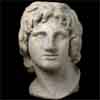Africa timeline
One of the regular sitters to the court sculptor Thutmose is the pharaoh's wife, Nefertiti

With the return to favour of the god Amen, the young Tutankhaten's name is changed to Tutankhamun

The young Egyptian pharaoh, Tutankhamun, dies and is buried in a suitable tomb

Ramses II, perhaps the greatest of Egypt's pharaohs, begins a reign of sixty-six years
An indecisve battle between the Hittites and the Egyptians, at Kadesh, stabilizes the frontier between the two empires

Ramses II creates a spectacular temple in his own honour at Abu Simbel
Libyans in the Egyptian army take control of the nation and rule as pharaohs
The traditional date of the founding of Carthage (supposedly by the mythical queen Dido, but in practice by Phoenicians)
The earliest surviving sundial is in use in Egypt
The king of Cush, or Nubia, conquers down the Nile to the sea, establishing the Cushite dynasty

Egyptian scribes develop an abbreviated version of hieroglyphs for everyday use, in the script known as demotic ('for the people')
The Egyptian city of Memphis falls to an Assyrian army, soon to be followed by Thebes
The Babylonians defeat an Egyptian army at Carchemish, but do not press on into Egypt
Isis, who is able to restore her husband Osiris after he has been chopped into pieces, becomes one of the most popular deities in Egypt
Phoenicians sail round the Cape of Good Hope and bring back the surprising news that the sun was seen to the north of them
Larache is founded as a Carthaginian colony on the Atlantic coast of Africa
The Persians defeat an Egyptian army at Pelusium and then capture Memphis
The Persian emperor Darius I constructs a canal linking the Nile to the Red Sea
The rulers of Aksum, the first Ethiopian kingdom, claim descent from Solomon and the Queen of Sheba
Nok terracotta figures, found in modern Nigeria, stand at the beginning of the rich tradition of African sculpture
Forces of the Delian League assist the Egyptians in a successful revolt against their Persian rulers
The Greeks suffer a major reverse when their fleet is trapped on the Nile and destroyed by the Persians
The Greek historian Herodotus visits Egypt and provides, among many other details, an account of the process of mummification

While in Egypt, Alexander founds Alexandria – the best known of the many towns he establishes to spread Greek culture
The spread of Greek rule by Alexander introduces the Hellenistic age, which will last for three centuries









